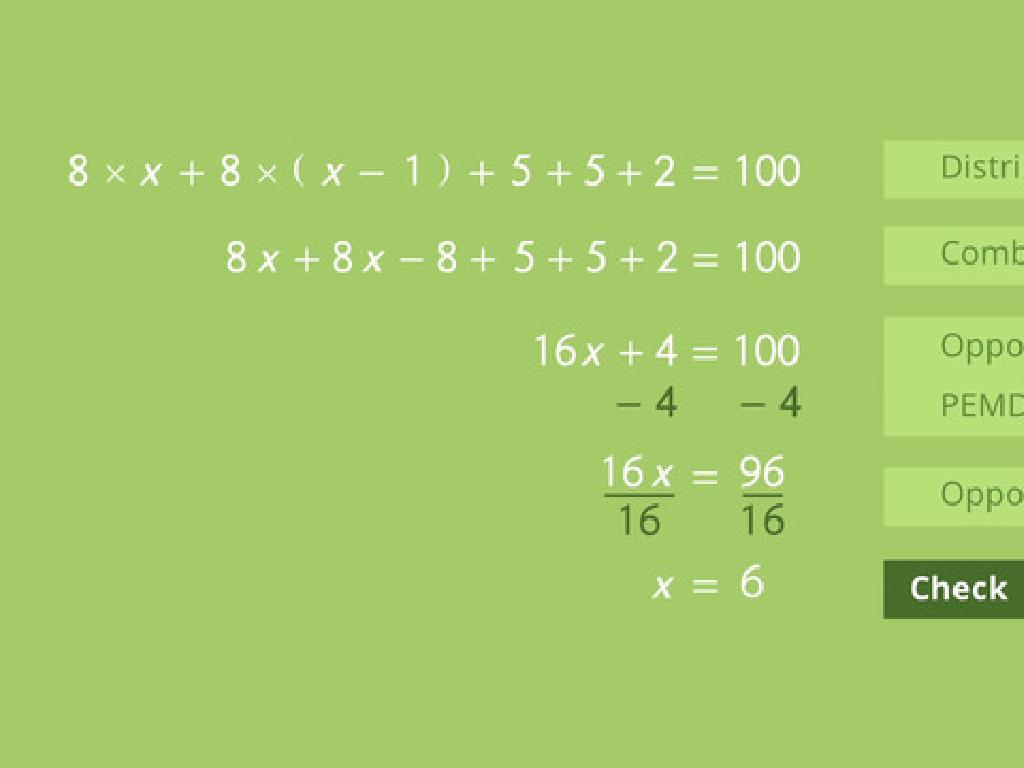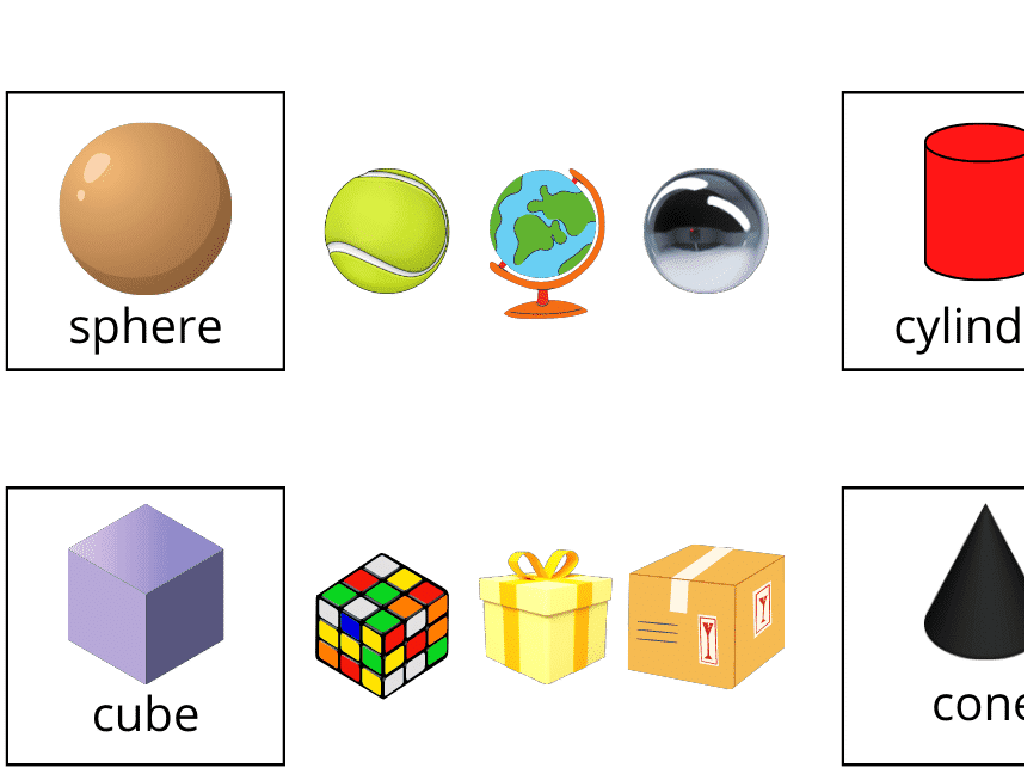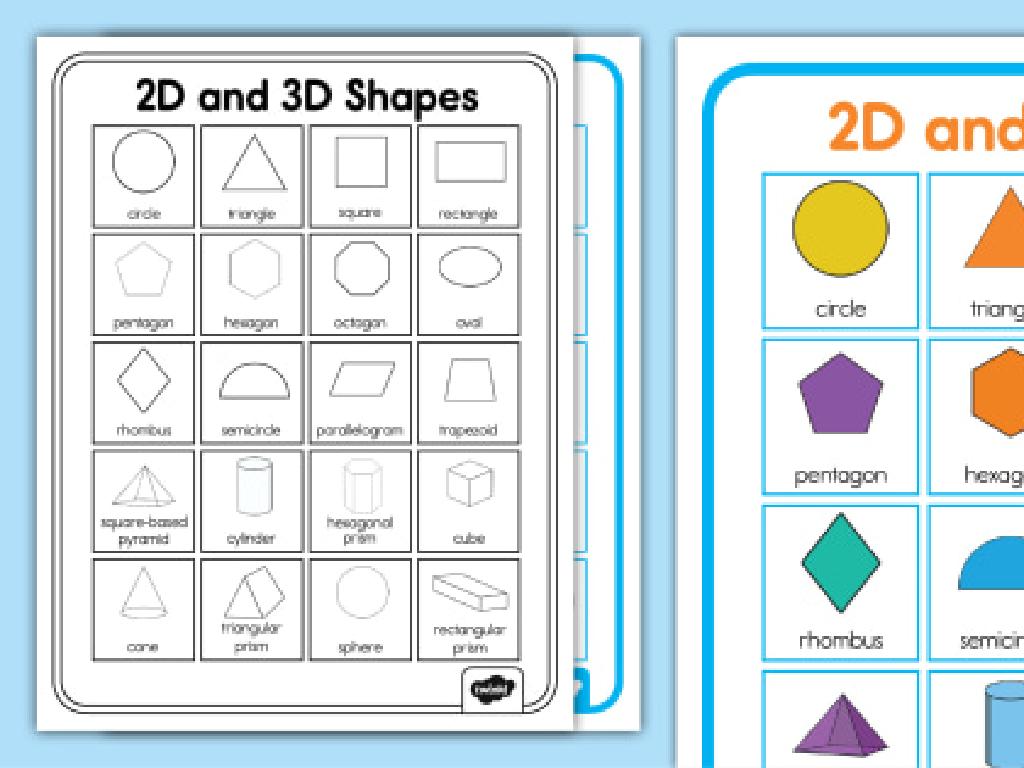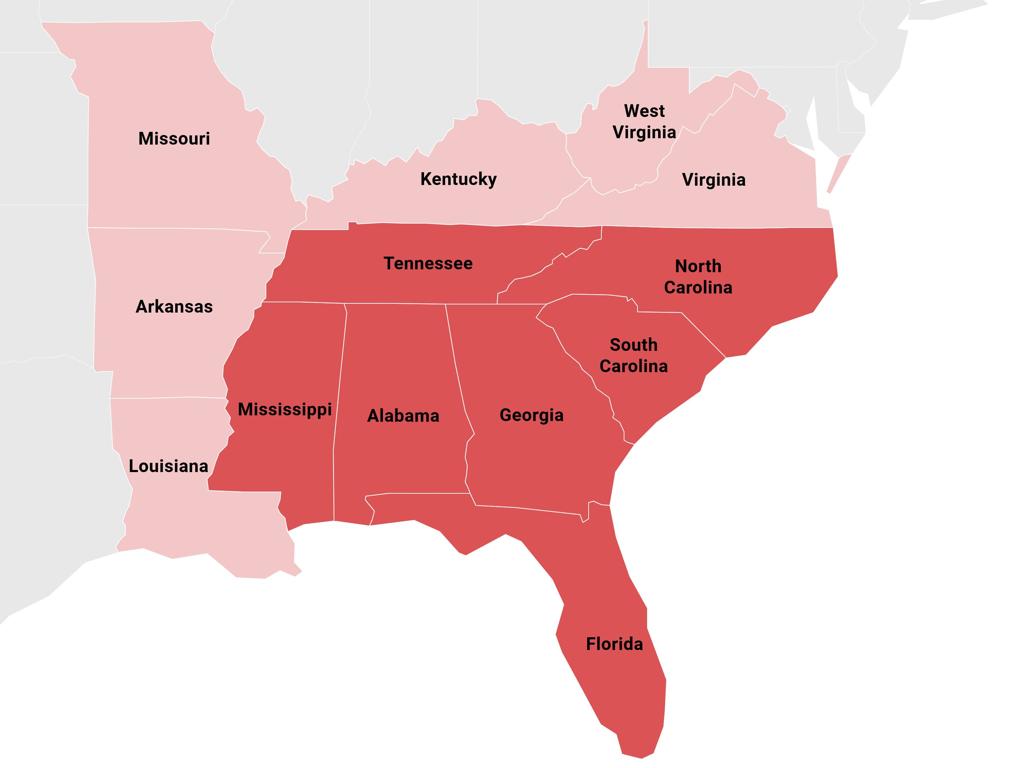Relationship Between Area And Perimeter
Subject: Math
Grade: Fourth grade
Topic: Area
Please LOG IN to download the presentation. Access is available to registered users only.
View More Content
Exploring Area and Perimeter
– Area measures inside space
– Area is measured in square units, like square feet
– Perimeter is the boundary length
– Perimeter is the total length around a shape, like adding all sides of a rectangle
– Area and perimeter connection
– Sometimes increasing one can change the other
– Different shapes, different measures
– A rectangle and a square with the same perimeter can have different areas
|
This slide introduces the basic concepts of area and perimeter, which are fundamental in understanding two-dimensional space. Area is the measure of space inside a shape and is expressed in square units. Perimeter is the total length around a shape. It’s crucial to highlight how changing the dimensions of a shape can affect both area and perimeter, but they do not always change in the same way. For example, a shape can have a larger area but the same perimeter as another shape. Use real-life examples like the size of a garden or the length of a fence to make these concepts relatable. Encourage students to think about how different shapes with the same perimeter can have different areas, and vice versa. This will set the stage for deeper exploration and problem-solving activities in class.
Exploring Area
– Area: space inside a shape
– Measured in square units
– e.g., square inches, square feet
– Example: Area of a square
– If a square has a side of 4 inches, area is 16 square inches (4×4)
– Practice finding area
– Use graph paper to draw shapes and count squares inside
|
This slide introduces the concept of area to fourth-grade students. Area is defined as the amount of space inside a two-dimensional shape, such as a square or rectangle. Emphasize that area is measured in square units, which could be square inches, square feet, or any other unit of measure, depending on the size of the shape. Provide an example by calculating the area of a square, using the formula side times side. To reinforce the concept, have students practice finding the area of various shapes using graph paper, where they can draw shapes and count the number of square units inside. This hands-on activity will help solidify their understanding of how area is determined and the importance of using the correct units.
Exploring Perimeter
– Perimeter: distance around a shape
– Add up all the sides of a shape
– Measured in linear units
– Inches, feet, meters, etc.
– Example: rectangle’s perimeter
– 2 x (length + width) for rectangles
– Practice measuring perimeter
|
The perimeter is an important concept that represents the total distance around the edge of a two-dimensional shape. It is measured in linear units, which can vary depending on the system used (imperial or metric). For example, to find the perimeter of a rectangle, students should multiply the length by 2 and the width by 2, then add those numbers together. This slide will introduce the basic formula for calculating the perimeter of a rectangle and encourage students to practice measuring perimeter using different units and shapes. Provide rulers or measuring tapes for students to work with real objects and enhance their understanding.
Comparing Area and Perimeter
– Same perimeter, different areas
– Example: Rectangles with same perimeter but different length and width
– Same area, different perimeters
– Example: Different shapes with equal areas but varying perimeters
– Activity: Drawing shapes
– Draw two shapes with equal perimeters and compare their areas
|
This slide introduces the concept that shapes can have the same perimeter but different areas, and vice versa. Use examples like rectangles with the same perimeter but different length and width to illustrate the first point. For the second, show shapes like a square and a rectangle with the same area but different perimeters. The class activity involves students drawing two different shapes that have the same perimeter. Provide guidelines for the teacher to facilitate this activity, suggesting tools like string or rulers to measure and compare perimeters. Encourage creativity and ensure students understand that the perimeter is the total distance around the shape, while the area is the space inside it. Possible activities could include drawing shapes on graph paper, using tiles to create shapes with the same perimeter, or cutting out shapes from construction paper.
Calculating Area: Squares and Rectangles
– Area calculation formula
– Area of square: side x side, rectangle: length x width
– Practice with examples
– Let’s solve area problems as a class
– Activity: Measure your desk
– Use a ruler to find the length and width of your desk, then calculate the area
– Understand area application
|
This slide introduces the concept of area and provides the formulas for calculating the area of squares and rectangles. Start by explaining that area represents the space inside a shape. Demonstrate the formula for a square and a rectangle with visual examples. During the practice session, solve a few problems together, ensuring students understand the process. For the activity, students will apply their knowledge by measuring their desk and calculating its area, which helps them relate math to real-world objects. Encourage students to think about why understanding area is useful, such as determining the amount of space for their books or computer on the desk.
Calculating Perimeter
– Perimeter of squares and rectangles
– Add up all sides for rectangles, 4 times one side for squares
– Let’s calculate together!
– Classroom door perimeter activity
– Use a tape measure for the door, then add all sides
– Understanding perimeter application
– Perimeter is useful in everyday situations, like framing a door
|
This slide introduces the concept of calculating the perimeter, focusing on squares and rectangles. Begin by explaining that the perimeter is the total distance around the outside of a shape. For squares, multiply the length of one side by four. For rectangles, add the lengths of all four sides. Engage the class with a group calculation on the board to reinforce the concept. Then, move on to a hands-on activity where students will measure the perimeter of the classroom door using a tape measure. This will help them understand how perimeter is used in real-life situations, such as determining the amount of material needed to frame a door. Provide clear instructions for the activity and ensure safety when using the tape measure. After the activity, discuss how the concept of perimeter applies to various everyday contexts.
Area vs. Perimeter: Real-Life Applications
– Understanding area and perimeter
– Area measures inside space, perimeter measures the edge
– Real-life examples: gardens, rooms, fences
– Gardens: area for planting, perimeter for fencing; Rooms: area for carpet, perimeter for painting
– Discussing other uses in daily life
– Where else might these measurements be important?
|
This slide aims to help students grasp the practical uses of area and perimeter in everyday life. Begin by explaining that area is the measure of space inside a shape, while perimeter is the total length around the shape. Use relatable examples such as calculating the amount of grass seed needed for a garden (area) or the length of a fence required to enclose it (perimeter). For a room, discuss how area helps in buying the right amount of carpet, and perimeter assists in purchasing enough paint for the walls. Encourage students to think of other scenarios where they might need to measure area and perimeter, such as in constructing a pool, laying out a sports field, or wrapping a gift. This discussion will help solidify their understanding and show the relevance of math in the real world.
Class Activity: Design Your Dream Playground
– Design playground on grid paper
– Calculate area and perimeter
– Use length x width for area, add all sides for perimeter
– Present your playground design
– Explain your calculations
– Share how you found the area and perimeter
|
This activity encourages students to apply their knowledge of area and perimeter in a creative and engaging way. Provide each student with grid paper and ask them to design their own playground, dividing it into sections such as swings, slides, and sandboxes. They should calculate the area and perimeter of each section. After completing their designs, students will present their playground to the class and explain the math behind their calculations. For the teacher: prepare examples of how to calculate area and perimeter, assist students who may struggle with multiplication or addition, and ensure that each student understands the relationship between the two measurements. Possible variations of the activity could include using different shapes for playground sections, working in pairs, or incorporating obstacles that affect the area and perimeter.
Wrapping Up: Area and Perimeter
– Recap: Area fills, Perimeter outlines
– Area is measured in square units, Perimeter in units.
– Importance of Area and Perimeter
– Helps in real-life tasks like buying carpet or fencing a yard.
– Applying what we’ve learned
– Excited for the next Math journey!
|
As we conclude today’s lesson, we’ll review the key concepts of area and perimeter. Area, which is the space inside a shape, is measured in square units, while perimeter is the total length around a shape, measured in units. Understanding these concepts is crucial as they apply to everyday situations, such as determining the amount of paint needed for a wall or the length of fence required for a garden. Reinforce these ideas with examples and encourage students to think of their own. As we prepare for our next math adventure, get the students excited by hinting at the new and interesting concepts they’ll be exploring soon. This enthusiasm will help them see math as a journey rather than a chore.






